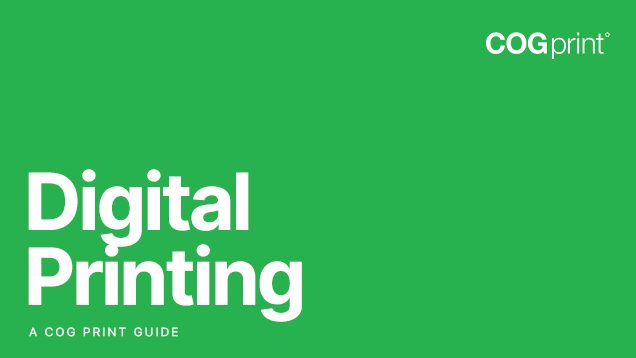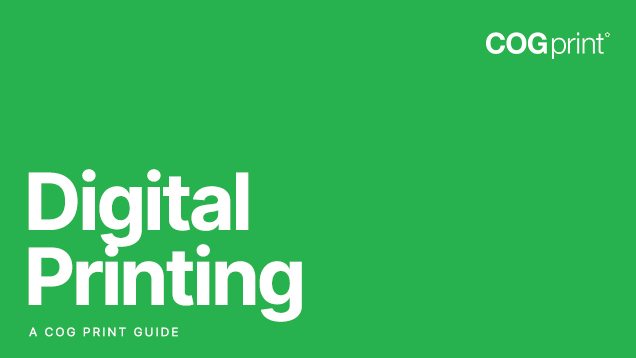Since the era of offset printing and letterpress, printing has advanced significantly. Digital printing has become a highly effective, economical, and adaptable printing option for small businesses with the development of digital technology. What is digital printing, though, and why should small businesses think about utilising it?
What is Digital Printing?
Digital printing is a printing method that creates prints directly onto a variety of material, such as paper, cardboard, or vinyl, using digital data, such as PDFs or JPGs. Digital printing is more faster and more affordable for small print runs than traditional printing techniques since it does not use printing plates.
How Should Digital Printing Be Used?
Business cards, brochures, flyers, posters, banners, and even unique packaging can all be printed using digital technology. Using high-quality digital files, such as vector graphics or high-resolution photos, is the secret to successful digital printing and will guarantee the final print is clear and crisp.
What Things Should Be Included in Digital Printing?
When it comes to digital printing, the options are endless. To ensure the best results, small businesses should consider including the following elements in their digital printing projects:
- High-quality images and graphics
- Vibrant and eye-catching colour schemes
- Clear and legible text
- Unique and memorable branding elements
- Effective call-to-action elements, such as QR codes or website links
- How Does Digital Printing Benefit a Small Business?
For small businesses, digital printing offers a number of benefits, including:
- Cost-effectiveness: Digital printing is significantly more affordable than traditional printing methods, making it ideal for small businesses with limited budgets.
- Quick turnaround times: Digital printing is much quicker than traditional printing methods, allowing small businesses to get their printed materials faster.
- Customisation: Digital printing allows for complete customisation of printed materials, enabling small businesses to create unique and memorable branding elements.
- Increased efficiency: Digital printing eliminates the need for printing plates, reducing production time and increasing efficiency.
How Can a Small Business Use Digital Printing?
Small businesses can use digital printing in a variety of ways, including:
- Marketing and advertising materials: Digital printing can be used to create eye-catching brand and marketing materials, such as brochures, flyers, and posters.
- Business cards: Digital printing allows for the creation of unique and memorable business cards that make a great first impression.
- Custom packaging: Digital printing can be used to create custom packaging for products, helping small businesses to stand out from the competition.
- Trade show materials: Digital printing can be used to create trade show materials, such as banners and posters, to promote a business’s products and services.
Why Should a Small Business Get Digital Printing?
There are many reasons why a small business should consider digital printing, including:
- Increased visibility: Digital printing enables small businesses to create high-quality, eye-catching materials that can help to increase visibility and attract new customers.
- Enhanced brand identity: Digital printing allows small businesses to create unique and memorable branding elements that help to establish a strong brand identity.
- Increased efficiency: Digital printing is much quicker and more efficient than traditional printing methods, freeing up time and resources for small businesses.
- Cost-effectiveness: Digital printing is significantly more affordable than traditional printing methods, making it an ideal solution for small businesses with limited budgets.
Is Digital Printing Expensive?
The cost of digital printing can vary depending on several factors, including the type of printing, the size of the print run, and the complexity of the design. However, in general, digital printing is considered to be more cost-effective than traditional printing methods, especially for short print runs.
What Type of Digital Printing is There?
There are several types of digital printing, including:
- Inkjet Printing: A popular type of digital printing that uses small nozzles to spray droplets of ink onto the printing surface.
- Laser Printing: A type of digital printing that uses toner instead of ink, making it a more efficient option for printing text-based materials.
- Dye-Sublimation Printing: A type of digital printing that uses heat to transfer dye onto a variety of materials, including fabrics and plastic.
- Thermal Transfer Printing: A type of digital printing that uses heat and pressure to transfer ink from a ribbon onto a printing surface.
What Sort of Professionals Offer Digital Printing?
There are several types of professionals who offer digital printing services, including:
- Digital Printing Agencies: These are professional companies that specialise in digital printing, offering a wide range of printing services and expertise.
- Freelance Printers: Freelance printers are independent contractors who offer digital printing services on a project-by-project basis.
- Print Shops: Many print shops now offer digital printing services, in addition to traditional printing methods.
Should You Use a Digital Printing Agency or Freelance Printer to Develop Digital Printing Collateral?
Several criteria, including budget, project complexity, and level of experience required, will determine whether to utilise a digital printing firm or a freelance printer to create digital printing collateral.
A digital printing company may be the ideal option if you have a large, complicated project with particular printing needs because they have the tools, knowledge, and resources to handle the job from beginning to end.
On the other hand, a freelance printer might be a more economical choice if you have a smaller, simpler project and a tight budget. Freelance printers can provide more flexible pricing options and frequently have cheaper overhead costs.
Ultimately, your particular needs and requirements will determine whether you work with a digital printing company or a freelance printer. It’s crucial to conduct study and pick the solution that will best serve your demands and get the desired outcomes.




